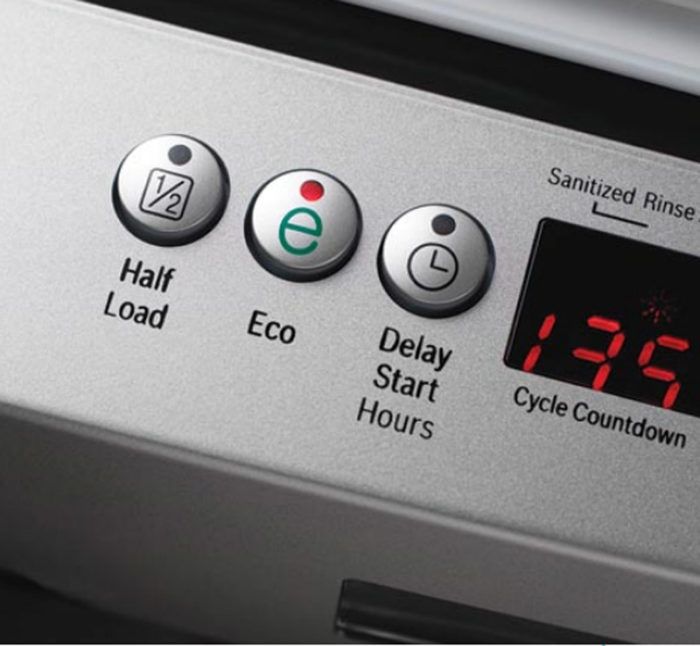The Energy-Smart Kitchen
Choose the right appliances to curb your home’s energy appetite.

Synopsis: Your kitchen consumes the most electricity of any room in your house. Refrigerators and freezers are the most voracious, but even gas ovens draw electricity, too. Author Alex Wilson explains how to choose the most-efficient appliances, and how to maintain their high performance while cutting energy consumption. He shares news about appliance-efficiency innovations, too.
When it comes to electricity consumption, the kitchen is the hungriest room in the house. Kitchen appliances—including refrigerators, freezers, ranges, and dishwashers—account for nearly 27% of household electricity use. Collectively, that’s more than 300 billion kilowatt hours (kwh) per year in the United States, or roughly the electricity output of 90 average-size coalfired power plants.
Not all appliances are equally voracious, however. Refrigerators and freezers account for nearly two-thirds of kitchen energy use, with ranges, ovens, and cooktops accounting for a little over one-quarter, and dishwashers the rest. Add in the heating, air conditioning, hot water, and lighting used in a kitchen, and this room is clearly the energy hog of most houses. Putting your kitchen on an energy diet might be one of the best things you can do to save money and resources. like most diets, it all comes down to making informed choices.
Refrigerators are the top energy guzzlers
In a typical American home, the refrigerator accounts for about 15% of total electricity use. Assuming heat and hot water are not electric, that makes the refrigerator a home’s single largest electricity consumer. This is the case even though refrigerators have improved dramatically since the mid-1970s; today’s models use about a third as much power as those from 30 years ago.
Cooking options pit efficiency against cost
More-efficient cooking saves energy and money directly, of course, but by keeping waste heat out of the kitchen, it also saves on air conditioning. Although this impact might not be huge in a typical home, it can make a difference. As a rule, electric cooking appliances are more efficient than gas fueled ones. But the relative price of natural gas versus electricity often makes natural-gas-fueled appliances a more economical choice. Gas cooktops also afford more controllability than their electric counterparts.
Because their functions are so different, it’s important to consider cooktops and ovens separately, even though they might be combined in a stand-alone kitchen range.
Gas ovens draw electricity, too
With ovens, rapid heat-up and cool down aren’t as important as with cooktops, making electric ovens more competitive with gas, even for serious cooks. In fact, it is not uncommon for high-end ranges to have a gas cooktop and an electric oven. Again, electric is more efficient: Electric ovens are 1.8 to 3.5 times as efficient as gas ovens, according to U.S. Department of Energy (DOE) data. Cost efficiency, however, largely depends on which type of fuel costs the least in your area.
Most gas ovens also use a lot of electricity while operating. In nearly all gas ovens today, when the gas burner is operating, an electric glow-bar igniter (some times called a “gas oven igniter”) is on, drawing about 375w. (Interestingly, at the international Builders’ Show in Orlando this year, not one kitchen-appliance salesperson who was asked seemed to be aware of this fact.) Found in all self-cleaning models, the glow bar ignites the gas when the oven is turned on and reignites it as it cycles off and on during the cooking or self-cleaning process. Those 375w (or even as much as 500w in some ovens) are a significant amount of electricity. If low electricity use is a priority in your home, consider a model without a glow bar, such as ranges made by the Peerless-Premier appliance Co., which operate with a pilot or a spark ignition.
For more photos and information on energy-smart kitchen appliances, click the View PDF button below.
Fine Homebuilding Recommended Products
Fine Homebuilding receives a commission for items purchased through links on this site, including Amazon Associates and other affiliate advertising programs.

Not So Big House

A House Needs to Breathe...Or Does It?: An Introduction to Building Science

Code Check 10th Edition: An Illustrated Guide to Building a Safe House

























